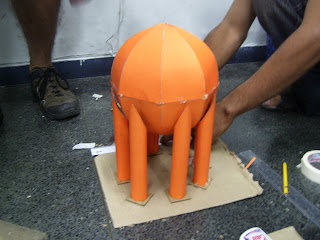MUNDO METAL MECÂNICO
Elevador para barcos
Não é nenhuma novidade, mas sem dúvida é muito interessante! Boa leitura.
Falkirk Wheel
Complexo Millenium Link - Escócia
Complexo Millenium Link - Escócia
Engenharia:
Ove Arup & Partners - Butterley Engineering
Ove Arup & Partners - Butterley Engineering
Projeto de Arquitetura:
RMJM Architects
RMJM Architects
__________________________________________________
Matéria Original no portal met@alica.com.br
Foto: Taynar Barreto/Cn1

Momento em que a torre desviava do Viaduto do Trabalhador e manobrava em frente ao HGC. Operários da Coelba levantam cabos de energia


http://camacarinoticias.com.br/leitura.php?id=71556
Matéria interessante sobre turbinas hidraulicas:
Transporte de torre gigante para o Pólo Industrial congestiona Via Parafuso
Cm informações de Taynar Barreto/Cn1Foto: Taynar Barreto/Cn1
Momento em que a torre desviava do Viaduto do Trabalhador e manobrava em frente ao HGC. Operários da Coelba levantam cabos de energia
O transporte de uma torre gigante que saiu as 6h, desta quarta-feira, 10, do Porto de Aratu com destino a empresa Oxiteno no Pólo Industrial de Camaçari, mobilizou varias carretas, equipes da Coelba e um aparato da Polícia Rodoviária e provocou congestionamento e trânsito lento durante todo o dia na Via Parafuso.
O equipamento veio de Taiwan de navio e por volta das 17h30 minutos conseguia desviar do Viaduto do Trabalhador, pois não passava por baixo de forma alguma. As equipes da Coelba a cada travessia de cabos de energia precisava eleva-los para que as carretas conseguissem passar.
Segundo informações, outros equipamentos semelhantes devem chegar nos próximos dias.
O equipamento veio de Taiwan de navio e por volta das 17h30 minutos conseguia desviar do Viaduto do Trabalhador, pois não passava por baixo de forma alguma. As equipes da Coelba a cada travessia de cabos de energia precisava eleva-los para que as carretas conseguissem passar.
Segundo informações, outros equipamentos semelhantes devem chegar nos próximos dias.
http://camacarinoticias.com.br/leitura.php?id=71556
Matéria interessante sobre turbinas hidraulicas:

